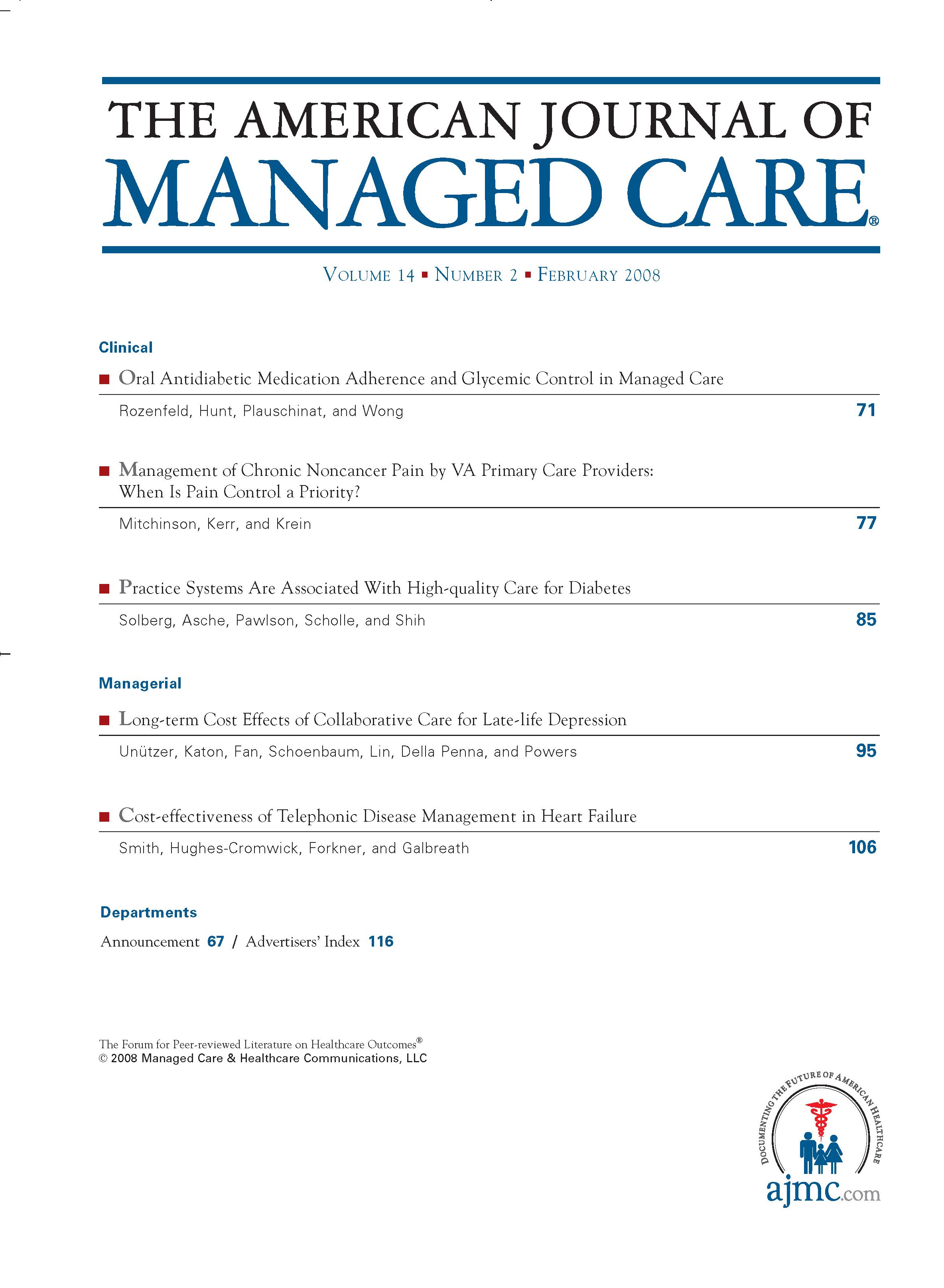- Center on Health Equity & Access
- Clinical
- Health Care Cost
- Health Care Delivery
- Insurance
- Policy
- Technology
- Value-Based Care
Improvements in Identifying Persistent Asthma Patients Using HEDIS Data
test
TO THE EDITORS
We applaud the research performed by David Mosen and colleagues, which suggests improvements in identifying persistent asthmatics when reporting Health Plan Employer Data and Information Set (HEDIS) data.1 We were pleased that the Kaiser Permanente Health Care Program had solicited our input into the research design, so it would help resolve questions about the specificity of the HEDIS asthma measure. The analysis determined that extending the eligibility criteria to 2 years would strengthen the specificity of the current HEDIS measure by improving administrative case identification of true persistent asthmatics.
The authors' recommendation to increase the eligibility from 1 year of identification to 2 years has already been included in the latest measure specifications, which were published last July.2 This is a good example of accelerating the transfer of research into practice, and we encourage this sort of collaboration to ensure that HEDIS remains a robust and valid set of measures for performance measurement.
Phil Renner, AVP
Kevin Weiss, MD
Min Gayles Kim, MPH
National Committee for Quality Assurance Washington, DC
1. Mosen DM, Macy E, Schatz M, et al. How well do the HEDIS asthma inclusion criteria identify persistent asthma? Am J Manag Care. 2005;11:650-654.
2. National Committee for Quality Assurance. Technical Specifications. Washington, DC: National Committee for Quality Assurance; 2005;460. HEDIS 2006. Health Plan Employer Data & Information Set; vol. 2.

Trends in Hospital Pricing for Vulnerable Emergency Department Users, 2021-2023
December 4th 2025Self-pay emergency department prices rose significantly from 2021 to 2023, especially at for-profit and system-affiliated hospitals, highlighting growing affordability challenges for uninsured and underinsured patients.
Read More
Integrated Care for Chronic Conditions: A Randomized Care Management Trial
December 3rd 2025The authors sought to understand the differential impact of payer-led community-based care management approaches on stakeholder-oriented outcomes for publicly insured adults with multiple chronic conditions.
Read More

